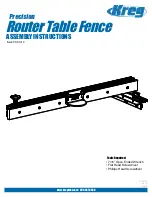
8
6620-3201
3.1.2 The Escape Sequence
If you enter a command such as “ATD”, which results in the unit successfully establishing a
connection to a remote system, it will issue a “CONNECT” result code and switch from command
mode to on-line mode. This means that it will no longer accept commands from the terminal. Instead,
data will be passed transparently through the unit to the remote system. In the same way, data from
the remote system will pass straight through to your terminal.
The unit will automatically return to command mode if the connection to the remote system is
terminated. To return to command mode manually, you must enter a special sequence of characters
called the “escape sequence”. This consists of three occurrences of the “escape character”, a pause
(user con
fi
gurable) and then “AT”. The default escape character is “+” so the default escape sequence
is:
+++ {pause} AT
Entering this sequence when the unit is on-line will cause it to return to command mode but it will NOT
disconnect from the remote system unless you speci
fi
cally instruct it to do so (using “ATH” or another
method of disconnecting). If you have not disconnected the call, the “ATO” command may be used to
go back on-line.
3.1.3 Result Codes
Each time an AT command line is executed, the unit responds with a result code to indicate whether
the command was successful. If all commands entered on the line are valid, the “OK” result code will
be issued. If any command on the line is invalid, the “ERROR” result code will be issued.
Result codes may take the form of an English word or phrase (verbose code) or an equivalent number
(numeric code), depending on the setting of the “ATV” command. Verbose codes are used by default.
The “ATV0” command can be used to select numeric codes if required. A full list of the Result codes is
provided in the following table:
The “AT” command pre
fi
x and the commands that follow it can be entered in upper or lower case.
After the pre
fi
x, you may enter one or more commands on the same line of up to 40 characters. When
the line is entered, the unit will execute each command in turn.
Numeric Code
Verbose Code
Meaning
0
OK
Command line executed correctly
1
CONNECT
ISDN connection established
2
RING
Incoming ring signal detected
3
NO CARRIER
X.25 service not available
4
ERROR
Error in command line
6
NO DIALTONE
ISDN service not available
7
BUSY
B-channel(s) in use
8
NO ANSWER
No response from remote
“S” Registers
“S” (Special) registers are registers in the unit that are used to store certain types of con
fi
guration
information. They are essentially a “legacy” feature included to provide compatibility with software
that was originally designed to interact with modems. A full list of the registers is provided under the
section heading “S registers”.









































